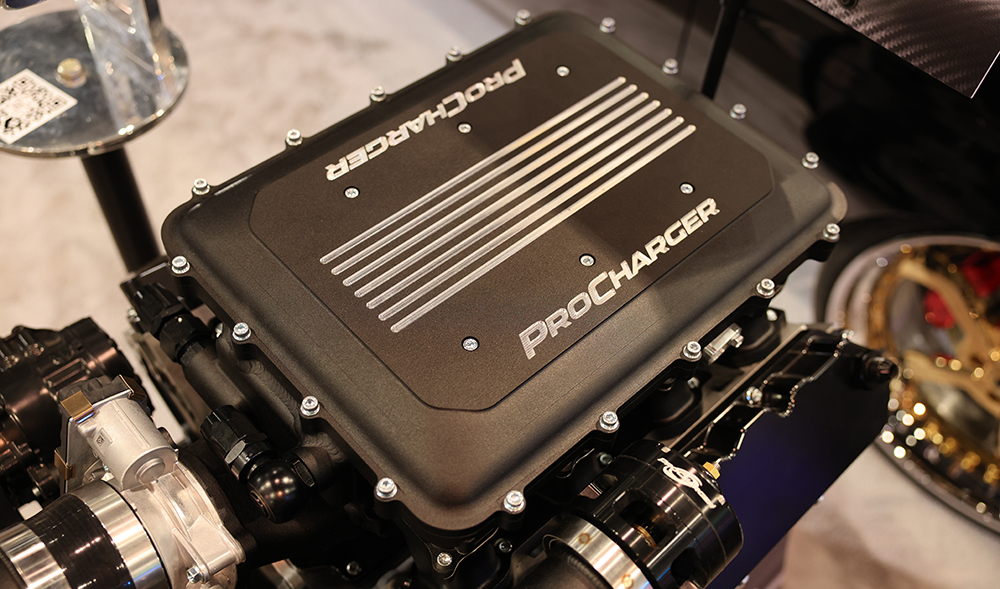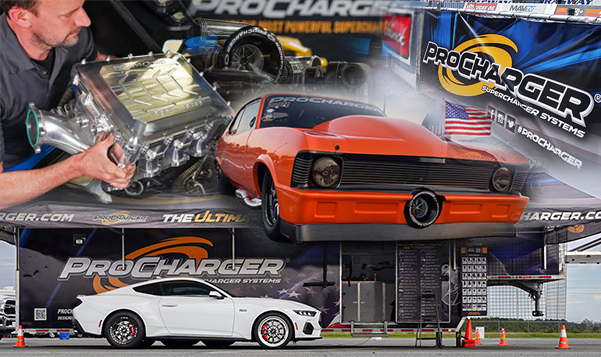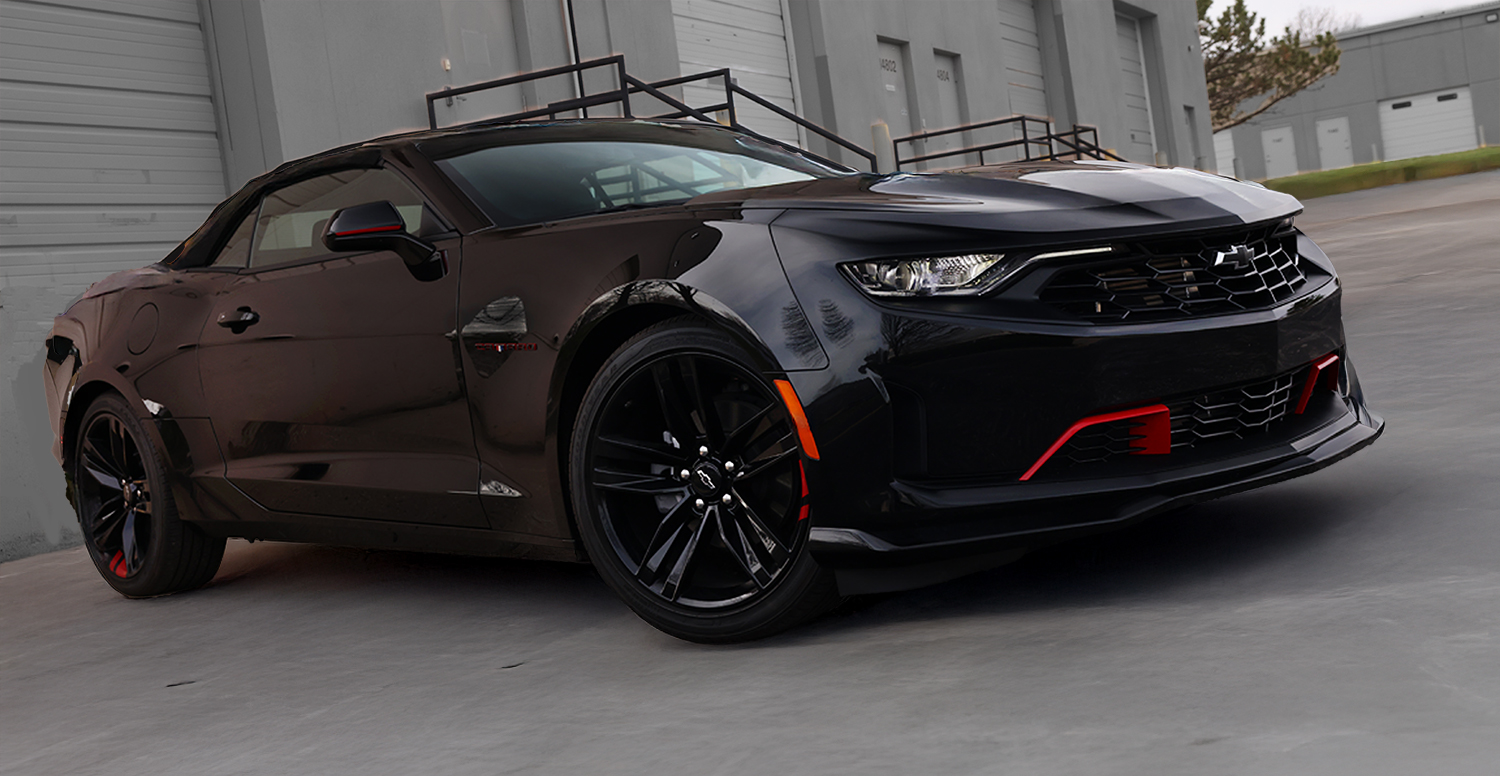Induction & Fuel Systems
Benefits of Fuel Injection When Supercharging
For many years now the method preferred by OEM’s has been electronic fuel injection, as it offers the best drivability and fuel economy under varying conditions. Not only do most fuel injection systems available today offer precise open and closed loop fuel management, they also integrate data recording and ignition controls which allow you to get the most from your ProCharged engine. Most OEM fuel injection systems utilize mass airflow sensors to calculate the actual mass or quantity of air flowing into the engine and then references appropriate spark and fuel amounts from tables stored inside the vehicle’s computer. Though TBI (Throttle Body Injection) systems are readily available and work well at lower boost levels (typically under 12 psi), MPFI (Multi-Point Fuel Injection) systems are most commonly found on forced induction applications. MPFI systems offer the most consistent fuel distribution and are easily configured to a broad range of applications.
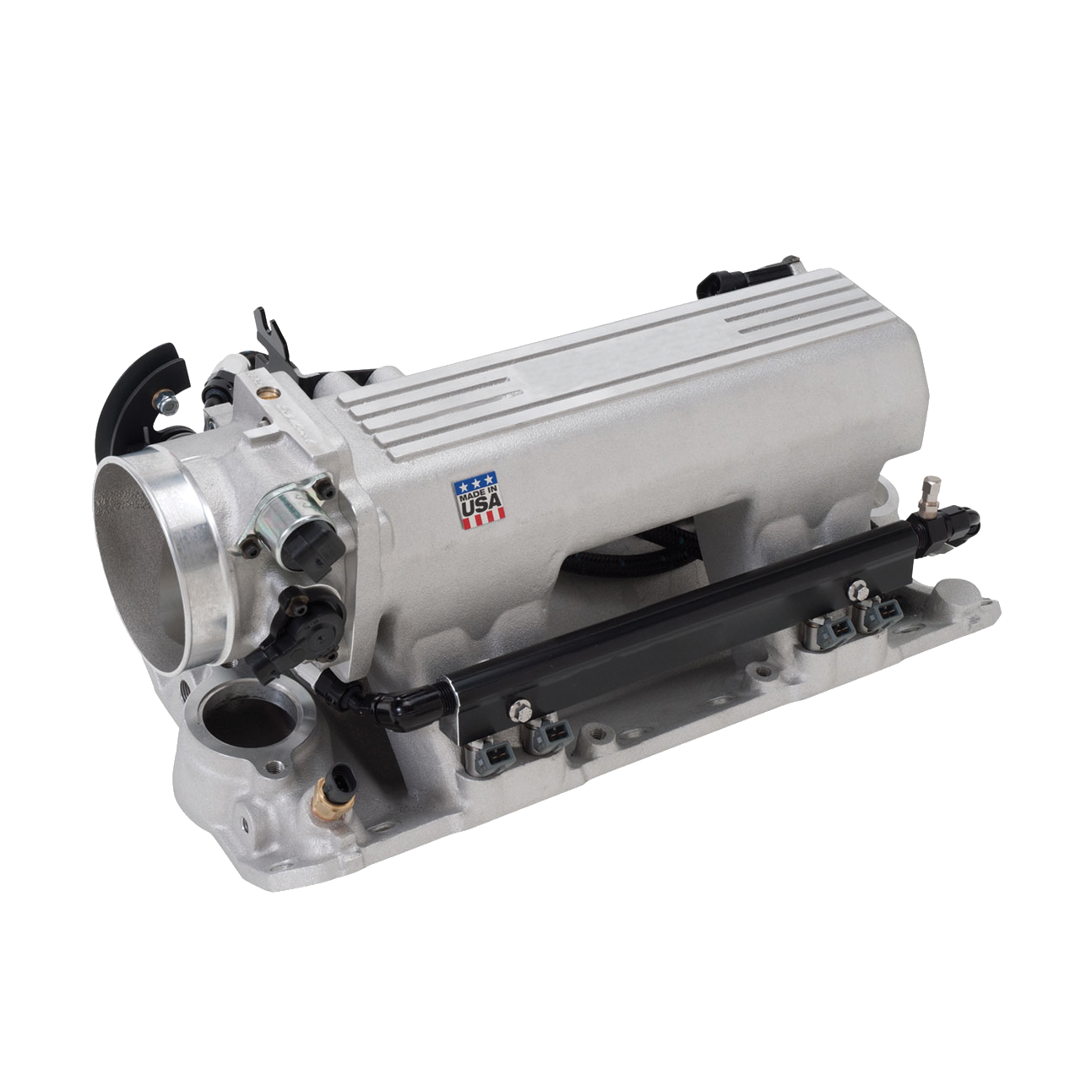
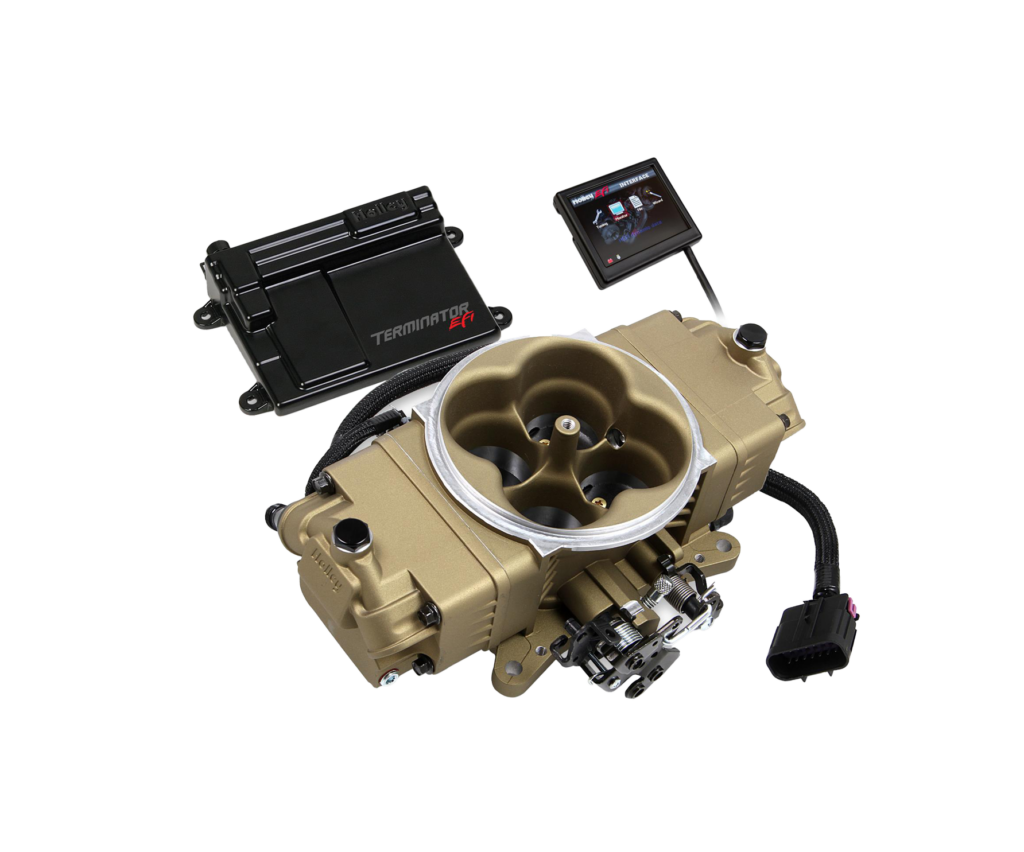
Considerations For EFI Component Selection
With forced induction, you want to select the proper injectors, fuel pump, and sensors, so the software provided with your EFI system can be configured for your particular engine combination. Once the EFI system is configured, a ProCharger carb hat can be fitted to applications utilizing a 4-bbl type throttle body, while applications using a single butterfly type throttle body are easily adapted to ProCharger discharge tubes using a short section of rubber hose. Although the initial configuration of an EFI system may prove a bit more involved than simply choosing a carburetor, when properly configured it can offer OEM-like drivability and optimal fuel economy.
O2 Sensor
Another consideration is the decision as to which type of O2 sensor will be used. Although popular for use on OEM applications, standard oxygen sensors fail to provide the resolution needed to properly tune a supercharged engine operating at air-fuel ratios numerically lower than 14.7:1. The best choice for a forced induction setup is typically a linear O2 sensor which offers a high level of accuracy at a broad range of air-fuel ratios. In the absence of a linear “wideband” O2 sensor option, initial tuning can be performed with an external sensor (often available at chassis dyno shops or available as a stand-alone unit).
Injector Size
Not only must a MAP sensor be of the proper type, the fuel injectors must be sized to correspond with the power level at which the engine is to be operated. When selecting your injector size, be sure to consider the approximate fuel flow (in lbs/hr) for the boost levels you plan to run, and divide that figure by the number of injectors to be used (8 in the case of an MPFI system on a V-8, and 2 or 4 on TBI applications) to determine the injector size which best fits your application. Most values assume a 0.6 BSFC (Brake Specific Fuel Consumption) and a maximum duty cycle of 85%, which are typically observed on supercharged vehicles. Though a larger-than-recommended injector may be used, doing so will adversely affect fuel atomization and vehicle drivability, as the injector may not be pulsed long enough to develop an ideal spray pattern at low engine RPM’s.
MAP Sensor
When selecting an EFI system, it is necessary to ensure that the system being considered is capable of compensating for manifold pressures above ambient. This typically requires little more than installing a 2 or 3 bar MAP (Manifold Absolute Pressure) type sensor and configuring the software to accommodate this new bit of hardware. Applications operating at 15 psi and below typically work best when used in conjunction with the 2 bar type sensors (boost levels up to 18 psi can be safely used), while applications operating at higher levels will benefit from the use of a 3 bar sensor. Using a 3 bar sensor at lower boost levels is acceptable, but is not recommended as it will decrease the resolution at which the system operates and can result in diminished overall performance.
Fuel Pressure Regulator Bypass
All engines rely on a consistent delivery of fuel into the engine, so the fuel pressure must be controlled relative to the boost level. This can be achieved in an EFI system through the use of a bypass style fuel pressure regulator used in conjunction with an electric fuel pump. Doing so will allow the fuel pressure to rise as the boost level rises.
Effect of Forced Induction on Fuel System
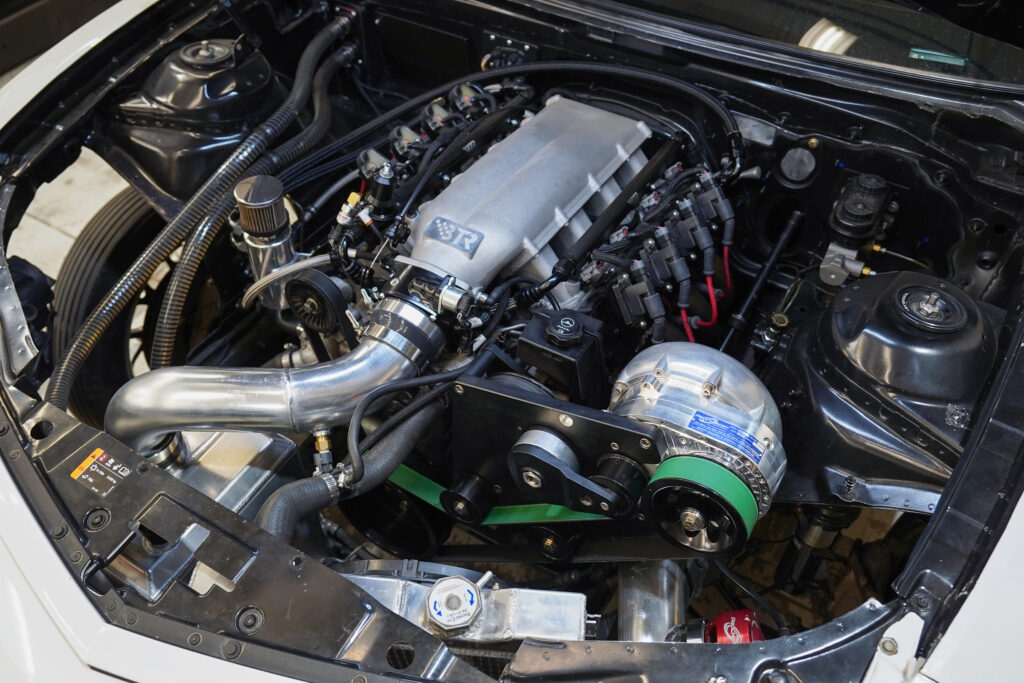
Considerations for Selecting a Fuel Pump
In a carbureted application with a typical base pressure of 8 psi to the carburetor and a boost level of 10 psi the system will cause the fuel pressure, as read on a gauge, to rise 8 psi higher than the boost level at any point in the RPM range and 18 psi at peak boost. EFI applications are also subject to the same conditions. With a typical base pressure of 40 psi and boost level of 15 psi your EFI fuel system would operate at a peak pressure of 55 psi. When selecting a fuel pump for your application, check with the manufacturer to confirm that it will support your desired power level at the needed fuel pressure. Though many pumps claim to be able to support a given power level, this is generally at fuel pressures utilized on naturally aspirated engines. Unlike those offered by ProCharger, most fuel pumps’ performance will drop off significantly at higher pressures.


